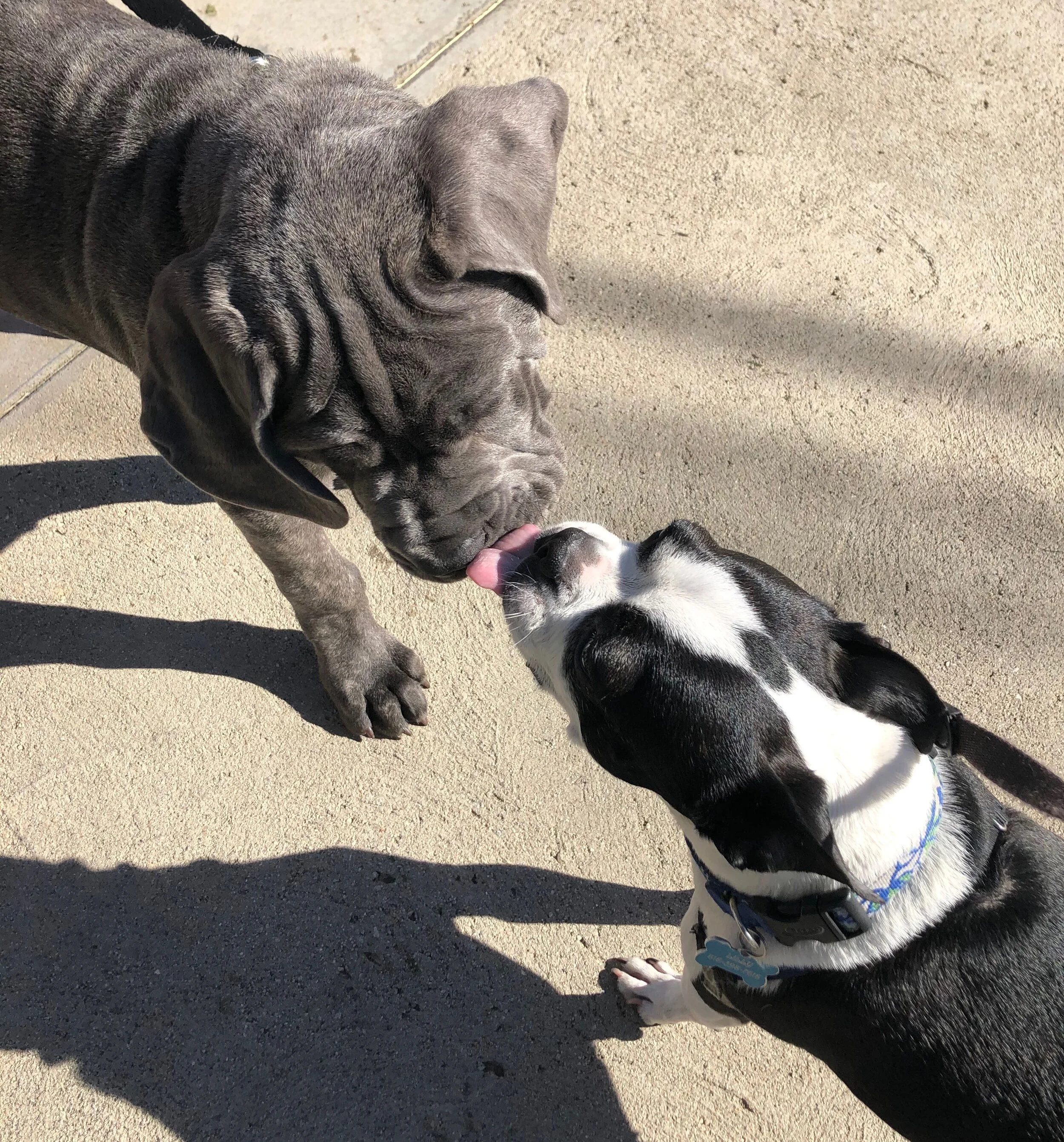Life as my nuclear family knows it teeters on the brink of enormous change.
In 12 days, I’ll be walking out of my hospital’s speech pathology clinic for the last time. The following week, my wife, Susan, our dog, Lilly, and I will pile into our Prius and drive 951 miles to our new home in the Pacific Northwest. Our plan is to apply for state licensure in our respective professions and work part time.
I picture the three of us nesting in our open-concept condo, a light rain tapping Morse code on the balcony railing. As Lilly flips her “burrito” over her shoulder, I entertain the idea of bringing home a new brother or sister for her.
Whoa, partner! Lots to consider here, not the least of which is timing. For the first several weeks especially, Lilly’s senses will be on overload, her nerves frayed and possibly on edge. Let’s let her soak up the scents, scenes and sounds of her new hood and kindle some canine bonds before we sign any adoption papers.
Those of you who’ve followed our Can’t She Just Get Along series know that Lilly’s temperament around other dogs has always been an issue. Since we adopted her in 2013, Lilly has simmered from a full- to a part-time whirling dervish upon spotting another dog. She now bats about .500. Great for a sandlot slugger. Sluggish for a canine good citizen.
Should Susan and I choose to cross the sibling bridge with Lilly, a drink from the well of common sense will keep our heads cool while our hearts are warm:
Lilly definitely gravitates to certain dog breeds. Short-haired bullies of any color are da bomb! Scruffy, shaggy and small are for dinner. Needle-nosed mixes of varying hair length can go either way. There have been rare exceptions to these rules. We welcome shattered stereotypes. The “right” companion for Lilly may arrive in a package none of us expects.
Our hearts may have been slain by that cutie at the shelter or rescue, but Lilly may be a tougher sell. By “seeding” a small piece of fabric with the hopeful sibling’s scent and presenting it to Lilly, we can give her a “taste” of life with another best friend or at least smooth over the introduction.
A one-on-one meeting in an outdoor play space at the rescue facility could be the next step. This may be more difficult to arrange in the age of COVID, but not impossible. Some rescues may resume socially-distanced meet-and-greets by appointment. Sniffing, rolling and romping on neutral ground might pave the road toward a permanent sleep-over.
Our expanded family would require intensive supervision at first. Sharing close quarters will at times test boundaries and flare tempers. As it is for two legged beings, so it is for those traveling on all fours. To keep the peace, we would need to hold firm as impartial pet parents and inter-species diplomats. No one will be above a “timeout.” If necessary, we won’t hesitate to enlist a certified professional trainer and/or behaviorist.
Along these lines, we’d have to patrol the boundaries between play and fighting. Sometimes the former can escalate into the latter. Tuning into body language and and the quality of growling is key. Play bows accompanied by melodic growling with lots of pitch variation means “I’m having fun!” Periodic breaks in the action are also good signs. Retraced ears, neck craning and guttural growls are signs of trouble. If it appears that one dog is constantly “pinning” the other down and the other is squirming away, the game must end.
The answer to our adopt-a-second-dog question will reveal itself as the three of us settle into our new home, adopt routines and explore the neighborhood.
Ultimately, we trust that Lilly will “let us know.”

